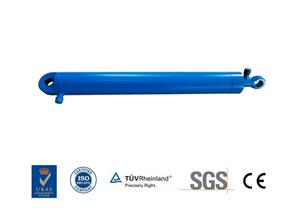Geometric tolerance
01 straightness
Straightness, which is commonly referred to as the degree of straightness, means that the actual shape of the linear elements on the part maintains an ideal straight line. Straightness tolerance is the maximum allowable variation of the actual line to the ideal straight line.
02 flatness
Flatness, commonly referred to as the degree of flatness, represents the actual shape of the planar elements of the part and maintains the ideal planar condition. Flatness tolerance is the maximum allowable variation of the actual surface from the ideal plane.
03 roundness
Roundness, commonly known as the degree of roundness, means that the actual shape of a round element on a part remains equidistant from its center. The roundness tolerance is the maximum allowable variation of the actual circle to the ideal circle on the same section.
04 Cylindricity
Cylindricity means that the points on the outline of the cylindrical surface of the part are kept equidistant from their axes. Cylindricity tolerance is the maximum variation allowed by the actual cylinder facing the ideal cylinder.
05 line profile
The line profile is the condition of a curve of any shape on a given plane of a part, maintaining its ideal shape. The line profile tolerance refers to the allowable variation of the actual outline of a non-circular curve.
06 profile
Surface profile is a condition that represents a curved surface of any shape on a part and maintains its ideal shape. The surface profile tolerance refers to the actual contour of a non-circular curved surface and the allowable variation of the ideal contour surface.
07 Parallelism
Parallelism, commonly known as the degree of parallelism, means that the actual elements on the part are kept at equal distances from the reference. Parallelism tolerance is the maximum allowable variation between the actual direction of the measured element and the ideal direction parallel to the reference.
08 Verticality
The perpendicularity, that is, the degree of orthogonality between the two elements, which means that the measured element on the part maintains a correct angle of 90° relative to the reference element. The perpendicularity tolerance is the actual direction of the measured element, and the maximum allowable variation between the ideal directions perpendicular to the reference phase.
09 Tilt
The inclination is the correct condition to indicate that the relative directions of the two elements on the part are kept at any given angle. The inclination tolerance is the actual direction of the measured element, and the maximum allowable variation between the ideal directions at any given angle to the reference.
10 degree
The degree of position refers to the accuracy of the point, line, surface and other elements on the part relative to its ideal position. Position tolerance is the maximum allowable variation of the actual position of the measured element relative to the ideal position.
11 coaxial (concentric) degree
Coaxiality, commonly referred to as the degree of co-axiality, means that the measured axis on the part remains on the same straight line relative to the reference axis. The coaxiality tolerance is the allowable variation of the measured actual axis relative to the reference axis.
12 symmetry
Symmetry refers to the state in which two symmetric center elements on a part remain in the same center plane. Symmetry tolerance is the allowable variation of the actual symmetry center plane (or center line, axis) of the ideal symmetry plane.
13 beating
Circle runout refers to the situation where the rotating surface on the part is within a defined measurement plane and remains in a fixed position relative to the reference axis. The circular runout tolerance is the maximum allowable variation within the limited measurement range when the measured actual element rotates a full revolution around the reference axis without axial movement.
14 Full beat
Full run-out refers to the amount of run-out along the entire measured surface when the part rotates continuously around the reference axis. The full runout tolerance is the maximum allowable runout when the actual element under test is continuously rotated around the reference axis, and the indicator moves relatively along its ideal contour.




